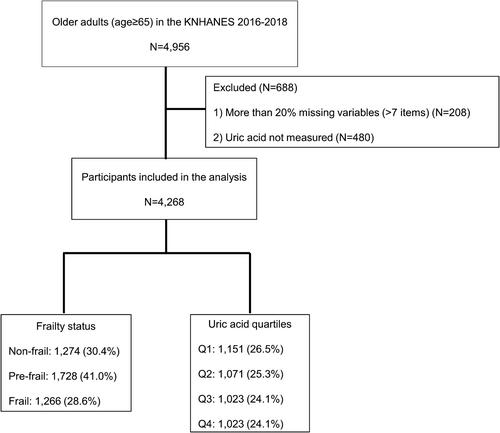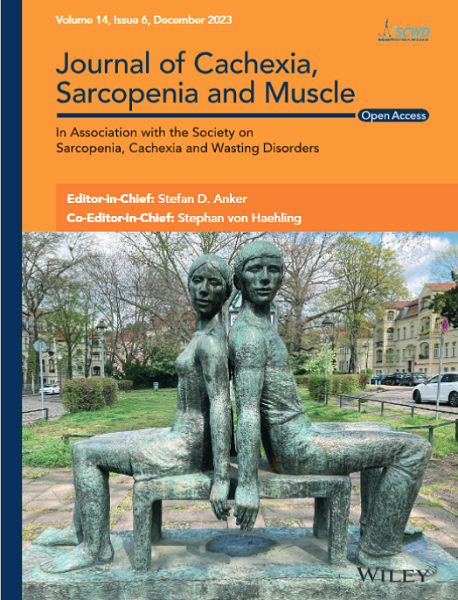Higher serum uric acid as a risk factor for frailty in older adults: A nationwide population-based study
Abstract
Background
Uric acid (UA), the terminal breakdown product of purine metabolism, possesses contradictory roles, functioning both as an inflammatory mediator and as an antioxidant. Its clinical relevance, particularly in geriatric populations, remains a topic of ongoing debate. Aiming to elucidate whether circulating UA is detrimental or beneficial to human health, we investigate the association between serum UA concentrations and the frailty index—a comprehensive measure of biological aging in a nationally representative cohort of community-dwelling older adults.
Methods
We conducted a population-based, cross-sectional study utilizing data from the Korea National Health and Nutrition Examination Survey. The sample included 4268 participants aged 65 years and above. A deficit accumulation frailty index (FI) was constructed using 38 items that assess physical, cognitive, psychological, and social domains. Based on the FI, participants were categorized into non-frail (FI ≤ 0.15), pre-frail (0.15 < FI ≤ 0.25), or frail (FI > 0.25). Serum UA levels were quantified through a colorimetric enzymatic assay.
Results
After controlling for confounders such as age, sex, socioeconomic status (including income and education level), lifestyle factors (smoking status), and medical history (hypertension, diabetes, dyslipidemia, stroke, cardiovascular diseases), and body mass index, serum UA levels were observed to be significantly higher in frail participants compared with their non-frail counterparts (P < 0.001). Furthermore, serum UA concentrations demonstrated a positive correlation with the FI (P < 0.001), and the odds ratio for frailty per 1 mg/dL increase in serum UA was 1.22 (P < 0.001). Additionally, older adults in the highest quartile of UA levels exhibited a significantly higher FI and 1.66-fold increased odds of frailty compared with those in the lowest quartile (P = 0.011 and P = 0.005, respectively).
Conclusions
These findings suggest that elevated circulating UA levels may act as a pro-aging factor rather than an anti-aging one in older adults, highlighting its potential role in accelerating biological aging. The data further support the utility of serum UA as a potential blood-based biomarker for frailty in this demographic, contributing to the expanding evidence on its significance in geriatric health assessments.


 求助内容:
求助内容: 应助结果提醒方式:
应助结果提醒方式:


